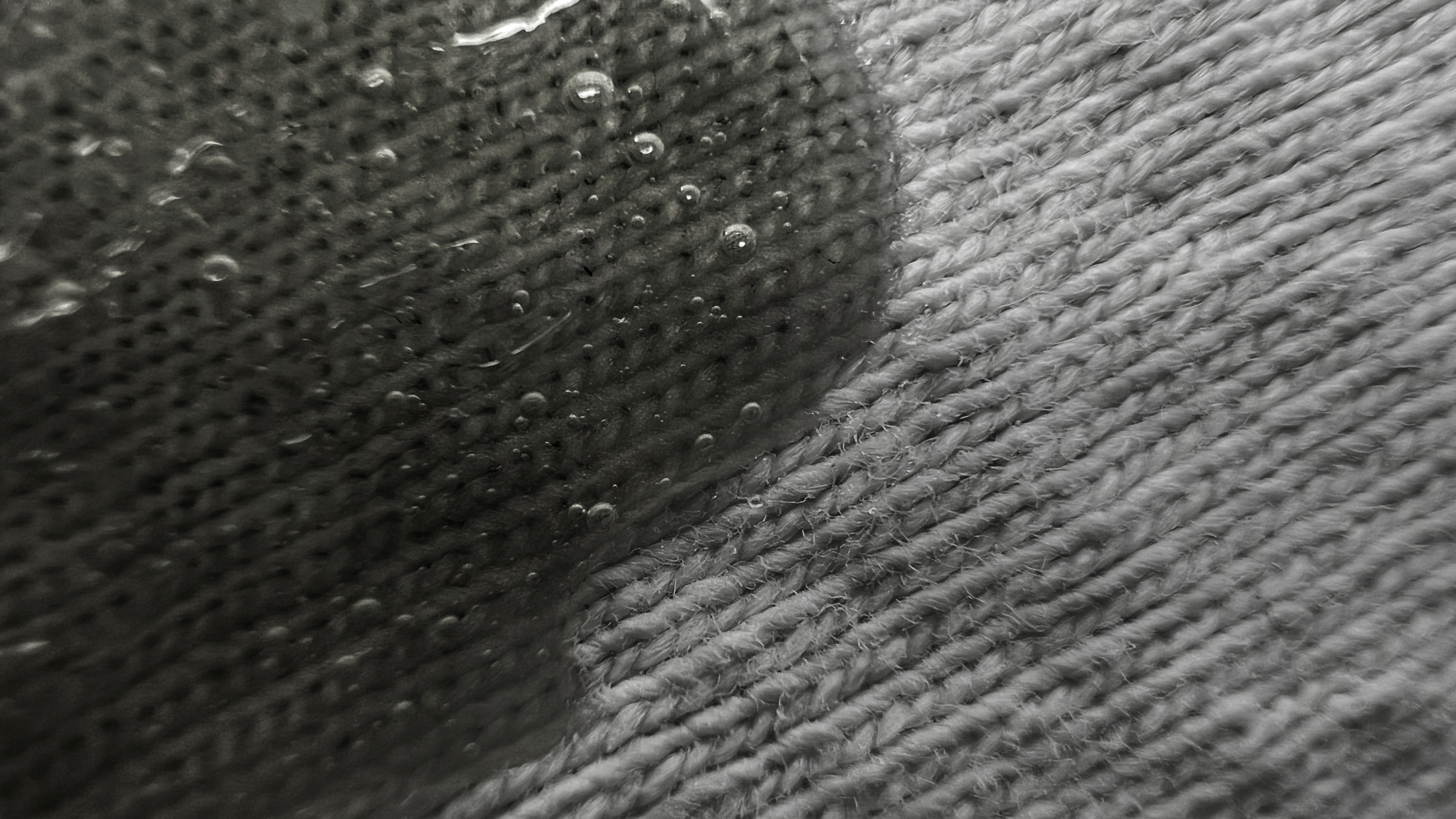Whenever you’re working with epoxy, it is important to wear gloves and protect any other areas of skin that might come in contact. If the epoxy does contact your skin, it can cause irritation, burns, or an allergic reaction. Unfortunately, try as we might to protect ourselves, we’ve all ended up with epoxy on our skin or clothes at some point.
Here are our recommended methods for removing epoxy.
Removing Resin or Mixed Epoxy from Skin
The Product: A hand cleaner with gritty or exfoliating particles, like GoJo® will work best for removing epoxy.
Why: Having grit in the hand cleaner helps lift the epoxy off the skin more quickly. Products like GoJo® encapsulate the epoxy molecules so they cannot re-bond to your skin.
How to Use: Scrub the contaminated area with the cleaner until the epoxy softens, peels off, or the area no longer feels sticky. If you work with epoxy often, it is a good idea to have this type of product near your workstation.
DO NOT: When cleaning your skin, do not use solvents. Using solvents like vinegar, isopropyl alcohol, or acetone can break down the epoxy and cause it to penetrate deeper into your skin. This can create a more severe reaction.
Removing Hardener from Skin
The Product: Plain old soap and water.
Why: Though the hardener is more chemically hazardous to skin, it washes away easily with just soap and water.
How to Use: Scrub the contaminated area with soap and warm water until it feels like all the material is gone.
Removing Epoxy from Clothing
Epoxy and clothing don’t typically get along too well. It’s always best to work cleanly and wear old clothes that you aren’t worried about ruining. If you do happen to get epoxy on your favorite shirt, however, it might still be salvageable.
Before using these chemicals, remove the article of clothing to prevent the solvent getting on your skin. Please note that solvents can change the color of, damage, or stain fabrics—especially more delicate fabrics, like silk, satin, wool, and some types of cotton.
Resin Only
Acetone or denatured alcohol are two products that can be used to remove resin from your clothing.
- Remove the article of clothing so these solvents do not come in contact with your skin.
- Dampen a clean paper towel with the acetone or denatured alcohol.
- Thoroughly wipe the spot until it appears to be gone.
- Rinse with warm, soapy water.
Hardener Only
As we mentioned above, hardener can be removed with soap and water. The same trick will work when removing hardener from fabrics as well.
Mixed Epoxy
If you accidentally get the epoxy mixture on your clothes, it’s likely to have hardened to some extent. In this case, it’s possible that removing the hardened epoxy could rip a hole in the fabric. To attempt to remove the epoxy, try these steps:
- Place a hard flat surface behind the affected area of the fabric.
- Dab the area with a waterless hand cleanser with grit like GoJo®, and use a straight edge of a scraper or mixing stick to scrape the epoxy from the fabric.
- There may still be epoxy in the weave of the fabric. Use some dish soap and a stiff fingernail brush until the spot disappears.
- Rinse with warm soap and water once the epoxy is gone.
Be aware that scraping and scrubbing the fabric can leave wear spots. Only do as much as needed.
Although there are ways to remove epoxy from surfaces they were not intended for, trying to avoid accidental contact altogether is ideal. Having a well-planned working area, proper safety equipment, and a cautious attitude are the best ways to prevent accidents.
Stay informed about the products you use and follow Epoxy Resins Safety Precautions and workshop safety practices that will protect you while using Entropy Resins epoxy products.
All Entropy Resins product labels provide basic safety information and appropriate hazard warnings. For specific information, download the SDS for the product in question or contact [email protected].


2 responses to “How to Remove Epoxy from Skin and Clothes”
Posted by Pam Brunner
Was attached ,someone coated my waist length hair, by the time I found it ,it was cured. I think it is epoxy. Do not want to cut all my hair off. Tried oil based solvent, Did not work. Tried condition et, it did not work.
Any ideas?
Posted on September 13, 2022 at 10:29 PM
Posted by mloebig
Hello Pam, sorry to hear about your issue! I have consulted with a couple of our tech advisers to help. Depending on how much epoxy is in your hair, and also depending on where the ‘clump(s)’ are located, you could try a few things:
1. Let your hair’s natural oils saturate the hair strands from the inside out (when showering, don’t use hair products). A lot of the time, you’ll be able to simply slide the epoxy down the strands and out of your hair. Epoxy does not bond well to oil-saturated surfaces. However, if you have a sizeable amount of epoxy in your hair, this may not be an option.
2. Use isopropyl (medical) alcohol. If the epoxy is towards the bottom of your hair, and you are able to soak the epoxied portion in a bowl or bucket, you could try soaking it in isopropyl alcohol for approximately 6-8 hours. This is the safest solvent you could use and it’s known to break down and soften epoxy. However, depending on your hair type, the alcohol could potentially damage your hair.
3. If option 1 hasn’t worked but option 2 is out of the question, the epoxy will slowly break down over time by taking showers, using shampoo, and taking a comb/brush to it daily. You will not get it out all at once, but over the course of a week or so, you’ll see results.
If you’ve tried all three methods and you’re not seeing results, unfortunately, you may have no better option than to cut your hair. If you’d like, you’re more than welcome to contact us for further troubleshooting. You can reach us Monday thru Friday during our normal business hours (8:00 am to 5:00 pm EST) at 310-882-2120.
Best of luck,
Michael
Posted on September 14, 2022 at 2:17 PM